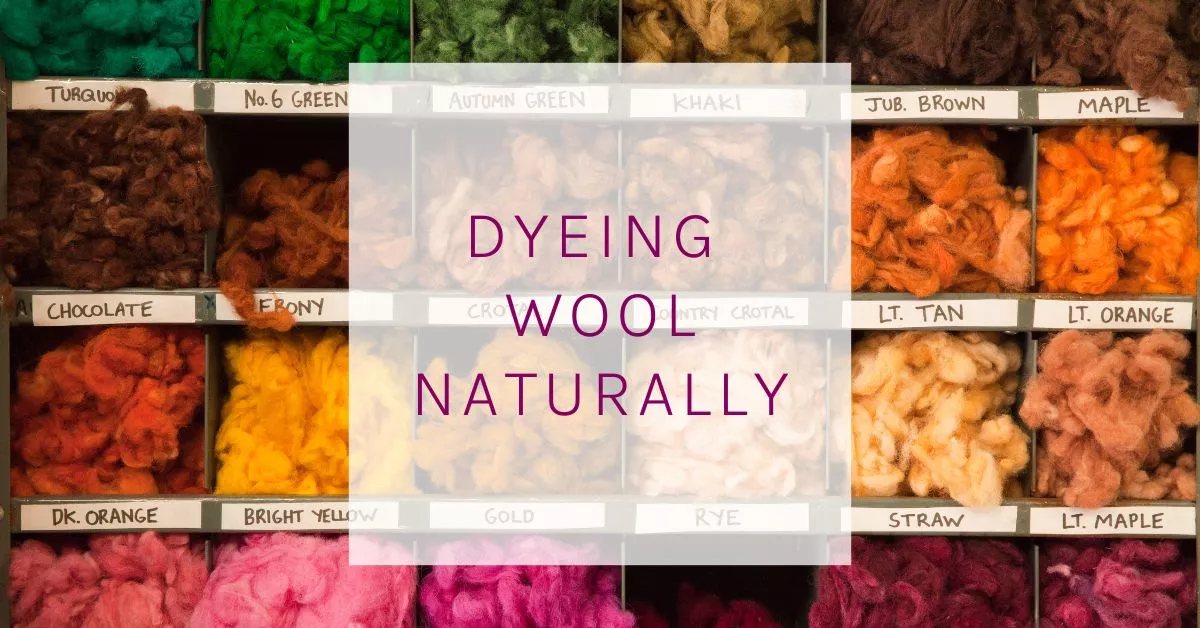
Before the use of chemicals, colours were found from the land around us. This post will take you through how wool was dyed naturally by our ancestors to make Harris Tweed.
Our ancestors worked hard to perfect the art of dyeing wool naturally. This involved finding items from the land, understanding how each natural resource could be used to achieve the desired colours, and a lot of trial and error. It was a skilled process, which required great knowledge of the land. Techniques would be perfected over time and passed down the generations, until these traditional methods were replaced with synthetic dyes.
To give you an idea of what used to create some of the colours that feature on our Harris Tweed bags today, here’s a list compiled by the Harris Tweed Authority. Many of these wildflowers today are now protected and can no longer be used for wool dyeing.
The art of natural dyeing was achieved by gathering some of the following plants and lichens:
Blue: Woad, bilberry or blaeberry with alum, and elder and broom with alum.
Yellow: Dyer’s rocket, broom, mugwort, and saffron crocus.
Red: Stone parmelia, which produced a reddish-brown and was a favourite shade for Harris Tweed® cloth.
Black or grey: Yellow flag iris, meadowsweet, alder-tree bark, root of the common dock, oak bark and acorns, and water-flag root.
Dark green: Ling heather, teasel, iris leaf, broom and whin or furze bark.
Magenta: Dandelion
Orange: Barberry root, peat soot and bramble.
Purple or Crimson: Cudbear.
As Harris Tweed became more popular at the beginning of the 20th century, these natural wool dyeing methods were no longer sustainable. The introduction of synthetic dyes brought a lot of advantages. A faster production rate, a variety of different colours and a guarantee of consistency, inevitably largely eliminating the traditional process.
Source: Harris Tweed Authority
| Cookie | Duration | Description |
|---|---|---|
| cookielawinfo-checkbox-analytics | 11 months | This cookie is set by GDPR Cookie Consent plugin. The cookie is used to store the user consent for the cookies in the category "Analytics". |
| cookielawinfo-checkbox-functional | 11 months | The cookie is set by GDPR cookie consent to record the user consent for the cookies in the category "Functional". |
| cookielawinfo-checkbox-necessary | 11 months | This cookie is set by GDPR Cookie Consent plugin. The cookies is used to store the user consent for the cookies in the category "Necessary". |
| cookielawinfo-checkbox-others | 11 months | This cookie is set by GDPR Cookie Consent plugin. The cookie is used to store the user consent for the cookies in the category "Other. |
| cookielawinfo-checkbox-performance | 11 months | This cookie is set by GDPR Cookie Consent plugin. The cookie is used to store the user consent for the cookies in the category "Performance". |
| viewed_cookie_policy | 11 months | The cookie is set by the GDPR Cookie Consent plugin and is used to store whether or not user has consented to the use of cookies. It does not store any personal data. |